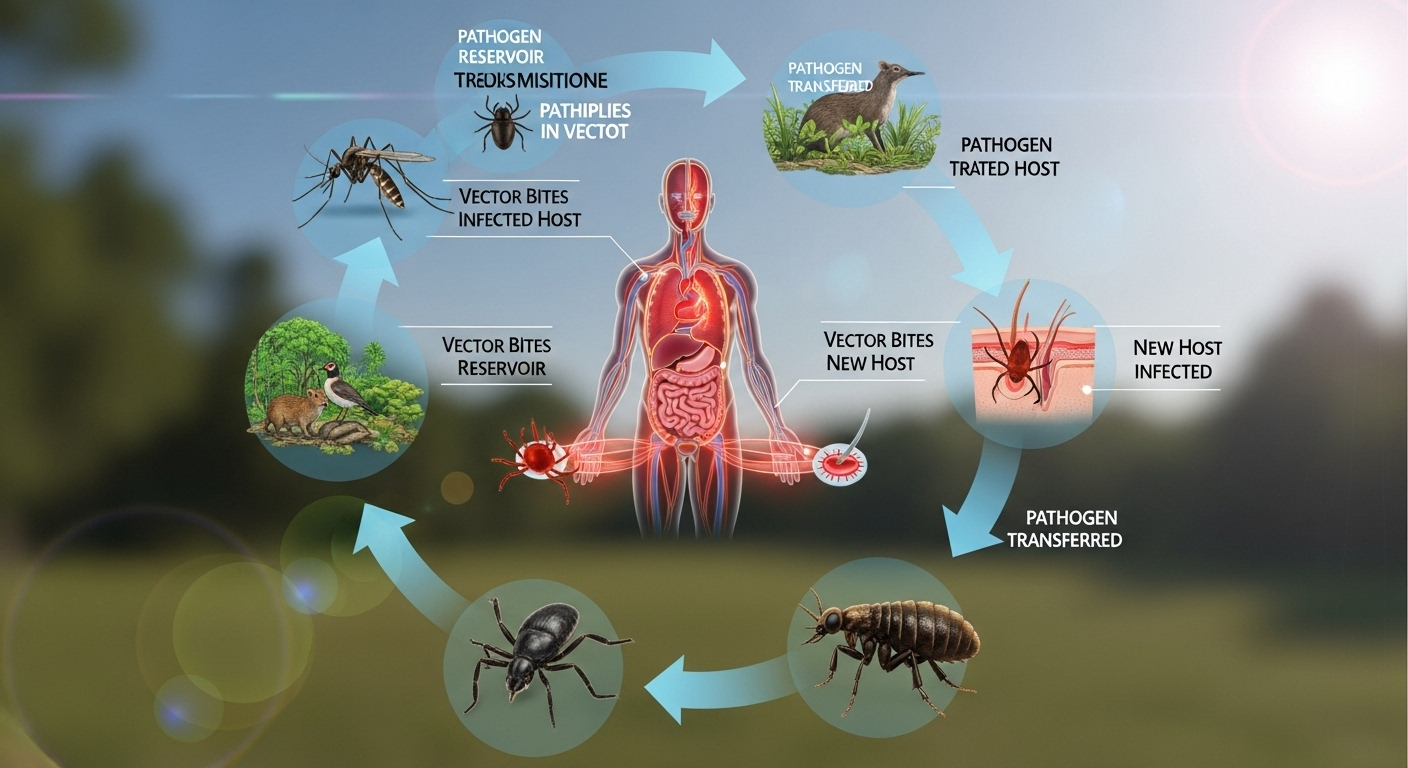Childhood Infectious Diseases – Complete List for Parents
Understanding childhood infectious diseases is essential for parents to ensure their children stay healthy and avoid preventable illnesses. Here is a comprehensive list of common childhood infectious diseases that every parent should know about, along with their symptoms, transmission methods, and prevention strategies. From viral infections like Measles to bacterial conditions such as Strep Throat, this guide equips parents with the knowledge to recognize, manage, and protect their little ones from these prevalent illnesses.
—
Table of Contents
Toggle1. Understanding the Basics of Childhood Infectious Diseases
1.1. What Are Infectious Diseases?
Infectious diseases are illnesses caused by pathogens such as viruses, bacteria, fungi, and parasites that can spread from person to person. These diseases often affect children due to their developing immune systems and close contact with peers in daycare or school settings. While some infections are mild, others can lead to severe complications if left untreated.
1.2. How Do They Spread?
Infectious diseases transmit through various means, including respiratory droplets, direct contact, contaminated surfaces, or insect bites. For example, Chickenpox spreads via airborne particles, while Pinworms are contracted through touching infected surfaces and then the mouth. Understanding transmission routes helps parents take proactive steps to minimize the risk of infection.
1.3. Common Types and Causes
Childhood infectious diseases are categorized into viral, bacterial, parasitic, fungal, and others. Viruses are the most common cause, with Rotavirus and Influenza being frequent culprits. Bacterial infections like Whooping Cough and Tonsillitis also pose challenges. Each type has distinct characteristics, which will be explored in detail in the following sections.
—
2. Common Viral Infections in Children
2.1. The Most Prevalent Viral Diseases
Viral infections are the most common childhood diseases, often causing mild symptoms that resolve on their own. However, some, like Chickenpox, can lead to serious complications. The Rotavirus is a prime example of a virus that spreads rapidly in daycare centers, while Influenza remains a seasonal concern. These diseases not only affect children but also place a significant burden on healthcare systems.
2.2. Symptoms and Complications
Symptoms of viral infections vary but often include fever, cough, runny nose, and fatigue. For instance, Common Cold typically presents with sneezing and sore throat, whereas Hand, Foot, and Mouth Disease features rashes and sores. While most viruses are self-limiting, some like Measles can cause pneumonia or even encephalitis. Recognizing these symptoms early can help parents determine when to seek medical advice.
2.3. Transmission and Prevention
Viral infections spread easily through close contact, shared toys, or airborne particles. Preventive measures such as handwashing, vaccinations, and avoiding crowded places during outbreaks are crucial. For example, Varicella-Zoster Virus (VZV) is preventable with the Chickenpox vaccine, while Rotavirus can be mitigated through oral vaccines.
—
3. Common Bacterial Infections in Children
3.1. The Role of Bacteria in Childhood Illnesses
Bacterial infections are caused by microorganisms that can multiply in the body, leading to more severe symptoms than viral infections. Strep Throat, Meningitis, and Tonsillitis are among the most common bacterial diseases in children. Unlike viruses, bacteria can often be treated with antibiotics, which are effective in reducing the duration and severity of the illness.
3.2. Examples and Their Impact
Streptococcus pyogenes is responsible for Strep Throat, which causes sore throat and fever. Meningococcal bacteria can lead to Meningitis, a serious infection of the brain and spinal cord. Haemophilus influenzae type b (Hib) is another culprit, causing Pneumonia or Meningitis. Early diagnosis and treatment are critical to preventing complications.
3.3. Transmission and Prevention
Bacterial infections spread through direct contact with infected individuals or contaminated objects. Preventive strategies include vaccinations like the Hib vaccine and good hygiene practices. For example, Whooping Cough is preventable with the DTaP vaccine, while Tonsillitis can be reduced by avoiding sharing utensils. Parents should also be aware of the risk factors for each disease.
—
4. Common Parasitic Infections in Children
4.1. Parasites and Their Influence on Health
Parasitic infections are caused by organisms that live on or in the body of a host, often leading to digestive or skin-related issues. Pinworms, Giardia, and Scabies are among the most common parasitic diseases in children. These infections are typically contracted through poor hygiene or contact with infected animals.
4.2. Examples and Prevalence
Pinworms are a widespread issue, especially in school-aged children, causing anal itching and restlessness. Giardia lamblia is transmitted through contaminated water, resulting in diarrhea and abdominal cramps. Scabies, caused by Sarcoptes scabiei, leads to intense skin rashes and itching. These infections often require antiparasitic treatments and environmental control.
4.3. Transmission and Preventive Measures
Parasitic infections spread through ingestion of contaminated food or water, contact with infected soil, or infected individuals. Prevention involves regular handwashing, cleaning toys, and avoiding nail-biting. For Pinworms, over-the-counter medications like mebendazole are effective, while Giardia may require oral rehydration therapy and antibiotics.
—
5. Common Fungal Infections in Children

5.1. Fungal Infections: Causes and Symptoms
Fungal infections are caused by mold, yeast, or fungi and often affect the skin, nails, or mucous membranes. Ringworm, Candida, and Athlete’s Foot are among the most common fungal diseases in children. These infections thrive in warm, moist environments and can be persistent if not treated.
5.2. Examples and Their Prevalence
Ringworm (tinea) appears as a circular rash and is contagious. Candida infections often manifest as thrush in the mouth or diaper rash. Athlete’s Foot (tinea pedis) causes itching and blisters on the feet. Fungal infections are more common in children with weakened immune systems or those living in humid climates.
5.3. Transmission and Treatment Options
Fungal infections spread through direct contact with infected surfaces or skin-to-skin contact. Treatment usually involves antifungal creams, oral medications, or topical ointments. For example, Antifungal sprays are effective for Athlete’s Foot, while oral antifungals may be necessary for Candida infections. Preventing recurrence requires drying affected areas and keeping the environment clean.
—
6. When to Seek Medical Help for Childhood Infections
6.1. Recognizing Severe Symptoms
While most childhood infections are manageable at home, some require immediate medical attention. Signs of severity include persistent high fever, difficulty breathing, seizures, or dehydration. For instance, Pertussis (Whooping Cough) can progress to pneumonia, and Rabies is life-threatening if not treated promptly.
6.2. When to Consult a Doctor
Parents should consult a healthcare provider if symptoms worsen or persist beyond the expected recovery time. Meningitis needs emergency care, while Chickenpox requires monitoring for complications like secondary infections. Viral infections like Influenza may need antiviral medications if symptoms are severe.
6.3. Prevention Tips for Parents
Preventing infectious diseases involves a combination of hygiene, vaccinations, and environmental controls. For example, washing hands regularly reduces the spread of Common Cold and Gastroenteritis, while vaccinations protect against Measles, Chickenpox, and Pertussis. Parents should also educate children on proper handwashing and avoid sharing personal items.
—
7. Frequently Asked Questions (FAQ)
Q: What are the most common childhood infectious diseases?
A: The most common childhood infectious diseases include Common Cold, Chickenpox, Influenza, Strep Throat, and Pinworms. These are often viral or bacterial in origin and can be managed with appropriate care.
Q: How can I prevent my child from getting these diseases?
A: Prevention strategies include vaccinations, regular handwashing, avoiding close contact with sick individuals, and keeping the environment clean. For parasitic infections, educating children about hygiene is key.
Q: Are there any long-term effects of these diseases?
A: Some diseases, like Measles, can lead to complications such as ear infections or pneumonia. Hib infections may cause seizures or hearing loss, while Parasitic infections like Scabies can lead to skin infections if untreated.
Q: What should I do if my child has a fever?
A: A fever is common in childhood infections, but persistent or high-grade fever (above 104°F) should prompt medical consultation. Hydration and rest are important, but severe cases may require antibiotics or antivirals.
Q: Are fungal infections contagious?
A: Fungal infections like Ringworm are contagious through direct contact or shared belongings, while Candida is often not contagious. Prevention involves keeping affected areas dry and avoiding close contact with infected individuals.
—
8. Key Takeaways and Summary
Childhood infectious diseases are a significant concern for parents, but understanding their causes, symptoms, and prevention methods can alleviate worry. This article highlights the most common viral, bacterial, parasitic, and fungal infections children face, offering practical guidance for managing and reducing the risk of these illnesses. By emphasizing vaccinations, hygiene practices, and early recognition of symptoms, parents can take proactive steps to ensure their children’s health.
—
Table: Common Childhood Infectious Diseases Overview
| Disease | Type | Transmission | Prevention | Typical Symptoms | Treatment |
|---|---|---|---|---|---|
| Common Cold | Viral | Airborne, contact | Handwashing, avoid crowded places | Sneezing, cough, runny nose | Rest, hydration, over-the-counter meds |
| Chickenpox | Viral | Airborne | Vaccination (Varicella vaccine) | Rash, fever, fatigue | Antiviral medications, rest |
| Strep Throat | Bacterial | Respiratory, contact | Vaccination (DTaP), antibiotics | Sore throat, fever, swollen glands | Antibiotics like amoxicillin |
| Pinworms | Parasitic | Contact, ingestion | Hygiene, deworming medication | Anal itching, restlessness | Antiparasitic drugs (mebendazole) |
| Ringworm (Tinea) | Fungal | Contact | Keeping areas dry, antifungal treatments | Circular rash, itching | Topical antifungal creams |
| Influenza (Flu) | Viral | Airborne, contact | Annual flu vaccine | Fever, cough, body aches | Antiviral medications, rest |
| Meningitis | Bacterial | Airborne, contact | Vaccinations (Hib, Meningococcal) | Fever, stiff neck, sensitivity to light | Antibiotics, hospitalization |
—
Conclusion
Childhood infectious diseases are a common challenge, but with awareness and proactive measures, parents can significantly reduce their impact. From viral infections like Common Cold to bacterial and parasitic diseases, each has distinct symptoms and treatment options. Prioritizing vaccinations, hygiene, and early intervention is vital for maintaining children’s health. By staying informed, parents can ensure their children recover quickly and avoid complications.
—
Summary
This article provides a detailed list of common childhood infectious diseases, including viral, bacterial, parasitic, and fungal types. It explains how these infections spread, their symptoms, and prevention strategies. Key sections cover transmission methods, treatment options, and when to seek medical help. A comparison table summarizes the main diseases, while an FAQ section addresses common concerns. By understanding these diseases, parents can better protect their children and manage illnesses effectively.













